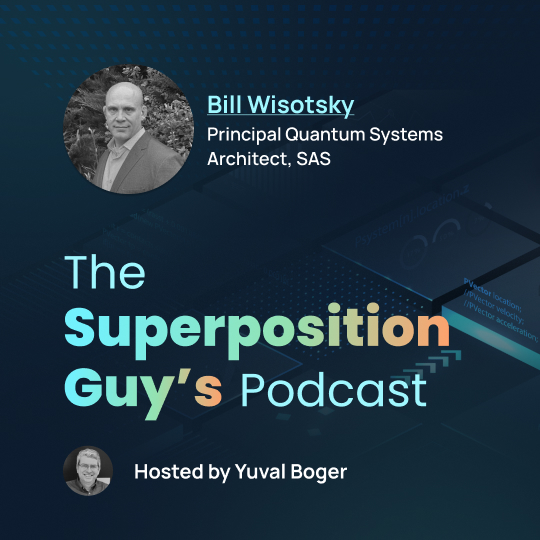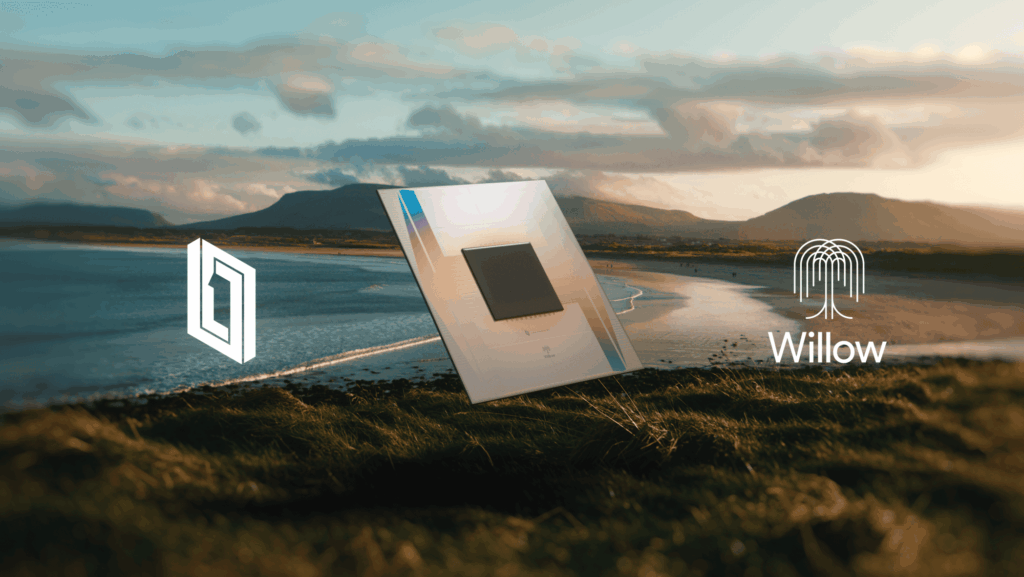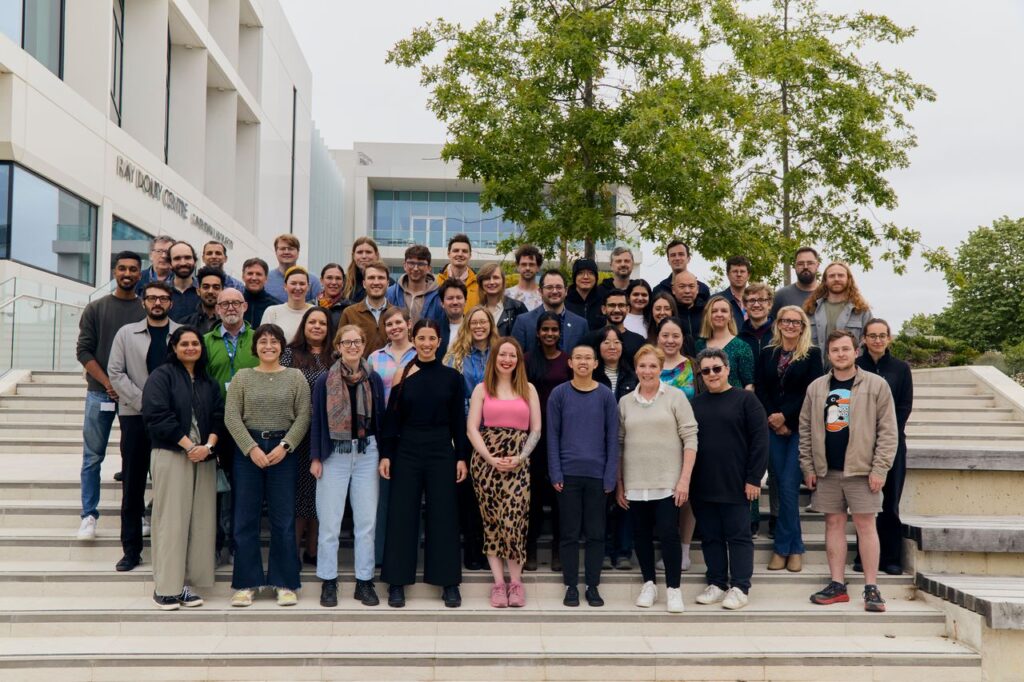Insider Brief:
- Researchers from NVIDIA, Stony Brook University, and Brookhaven National Laboratory developed a charge-preserving algorithm (CPVQD) that streamlines the computation of excited states in quantum systems as compared to traditional methods.
- CPVQD uses symmetry and conserved charges to reduce system dimensionality, optimizing calculations and avoiding unnecessary computations in quantum chemistry and nuclear physics applications.
- The algorithm was successfully tested on systems with up to 24 qubits, using NVIDIA’s CUDA-Q platform and the NERSC Perlmutter system to achieve faster convergence and computational efficiency.
Calculating excited states in quantum systems is one of the daunting challenges in quantum computing, essential for fields like quantum chemistry, high-energy physics, and nuclear physics. Traditional methods are often computationally expensive, requiring deep circuits and numerous controlled unitaries, which are impractical on today’s quantum hardware. To address this, as detailed in a recent arXiv preprint, a team of researchers from NVIDIA, Stony Brook University, and Brookhaven National Laboratory have developed a new charge-preserving quantum algorithm that streamlines these computations, using both quantum processing units and classical GPUs for efficiency.
VQD: Lesser-Known, But Not Of Lesser Value
The lesser mentioned variational quantum deflation algorithm is an extension of the widely studied variational quantum eigensolver. VQD allows for the computation of excited states—energy levels of a system above the ground state—which is relevanmt for applications ranging from quantum chemistry to condensed matter physics. However, the standard VQD algorithm, while effective in determining excited states, faces limitations due to its reliance on controlled unitaries. These challenges make it less practical for large-scale simulations, particularly on current devices where quantum hardware is still prone to errors and noise.

As noted in the paper, “current approaches to computing excited states require numerous controlled unitaries,” which introduces inefficiencies. To address this, the researchers developed the charge-preserving VQD (CPVQD) algorithm, which improves efficiency by incorporating symmetry and conserved charges into the process. This symmetry reduces the dimensionality of the system, enabling faster and more reliable computations.
Streamlining Quantum Calculations with Charge-Preserving VQD
The CPVQD algorithm is designed to compute excited states within a particular charge sector, a subset of the system that corresponds to specific conserved physical quantities, such as electric charge. By restricting calculations to this sector, the algorithm reduces the size of the problem, avoiding unnecessary computations on irrelevant states.
According to the study, CPVQD introduces two methods for dimensional reduction:
- Projection Method: This approach reduces the dimensionality of the system by projecting the Hamiltonian (the operator that defines the system’s energy states) onto the desired charge sector, discarding irrelevant states.
- Constraint Method: Here, the Hamiltonian is constrained by adding additional terms that enforce charge preservation. This method retains the original number of qubits but modifies the optimization process to ensure only relevant states are considered.
Both methods serve the end goal of computational efficiency while maintaining the integrity of the results. The research details how CPVQD was tested using simulations of systems with up to 24 qubits ab resulted in notable improvements in computational performance.
CPVQD Applications From Quantum Chemistry to Nuclear Physics
The researchers applied the CPVQD algorithm to several domains, including quantum chemistry and nuclear physics. In quantum chemistry, the algorithm was used to compute the excited states of molecules, such as the hydrogen molecule (H2) and the helium hydride ion (HeH+), both in their charge-neutral and ionized states.
For instance, in the simulation of the helium hydride ion, CPVQD was able to reduce the dimensionality of the problem from 16 possible states (in a 4-qubit system) to just 4 states, all within the +1 charge sector. As the authors explain, this dimensional reduction is beneficial for simulating ions as it simplifies the problem without sacrificing accuracy.
As it relates to nuclear physics, the algorithm was applied to compute spectra and mass gaps of quantum field theories, such as the Schwinger model—a model often used to study gauge theory in quantum electrodynamics. Computing these excited states is necessary for understanding phenomena such as particle interactions and phase transitions in quantum systems.
CUDA-Q and Perlmutter Combine for Advanced Quantum Simulations
As the team was largely made up of scientists from NVIDIA Quantum Algorithm Engineering and NVIDIA Quantum Computing Architecture scientists, one key aspect of the research was the use of CUDA-Q, NVIDIA’s open-source platform for hybrid quantum-classical computing. By integrating classical GPUs with quantum processors, CUDA-Q provides tools for efficient state preparation and optimization. The study also used NERSC’s Perlmutter system to run large-scale simulations on a state vector simulator, ultimately achieving benchmark results that highlight the potential of hybrid computing in quantum research.
According to the study, the integration of QPU and GPU logically brings about faster convergence in the results which is especially important when optimizing the parameters of the quantum circuits used in the VQD algorithm. This approach also helps mitigate the limitations of current quantum hardware by offloading certain computations to classical systems.
Not Without Limitations
While the CPVQD algorithm presents significant improvements in efficiency, several limitations and challenges remain. One of the main challenges highlighted in the research is the impact of noise and decoherence on quantum hardware, which can degrade the accuracy of the results. Although simulations in this study were performed on CUDA-Q—NVIDIA’s high-performance platform—and on classical GPUs, the eventual application on real quantum hardware is subject to the constraints of current quantum devices.
According to the study, the simulations were executed on a single NVIDIA A100 GPU without noise modeling in place. This lack of noise modeling means that, while the simulations show promising results in ideal conditions, real-world applications would face difficulties due to hardware imperfections.
Additionally, the dimensional reduction techniques introduced, while highly effective, are not without drawbacks. The projection and constraint methods simplify the computations by focusing only on relevant charge sectors. However, as the authors note, the heuristic determination of charge sector constraints can sometimes lead to non-convergence of the algorithm. This could result in the algorithm failing to compute certain excited states accurately, especially in complex systems with intricate charge distributions.
The study also mentions the challenge of scaling the algorithm to larger systems. While the CPVQD algorithm was tested on systems up to 24 qubits, larger systems would require further optimization to maintain efficiency.
Implications and Future Directions
While not without its own set of limitations, the CPVQD may one day fully address the limitations of existing methods as well as serve large-scale simulations in high-energy physics, nuclear physics, and quantum chemistry. The team concludes that the CPVQD algorithm can be extended to other quantum algorithms, such as Subspace Search VQE (SSVQE) and ADAPT-VQE, further expanding its applicability.
Contributing authors on the study include Zohim Chandani, Kazuki Ikeda, Zhong-Bo Kang, Dmitri E. Kharzeev, Alexander McCaskey, Andrea Palermo, C.R. Ramakrishnan, Pooja Rao, Ranjani G. Sundaram, and Kwangmin Yu.

















